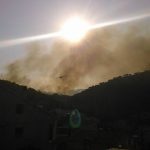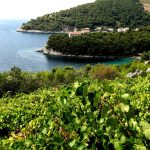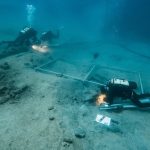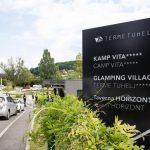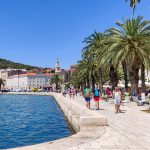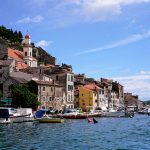April the 6th, 2025 – Could hydropower plants be on the cards for the Sava River? The possibility was explored recently as Zagreb’s energy potential was delved into.
As Poslovni Dnevnik/Ana Roksandic writes, today, the Sava River is a painfully underutilised resource flowing right through the capital, separated by natural surroundings from bustling urban life.
That might all finally change, and hydropower plants might find themselves as part of the Sava River’s future. A group of experts recently devised how the City of Zagreb and its surroundings could make far better use of the river that flows through the Croatian metropolis. In doing that, they presented the lengthy “Strategy for the Development of the Sava Area from the Border with Slovenia to the Confluence of the Sava-Sava Canal into the Sava River” at the Zonar Hotel.
The concept envisages the formation of a park-forest in the floodplain of the Sava River from Prečko to the confluence of the Sava-Sava Canal. The energy potential of this would become the backbone of the future development of the City of Zagreb and of wider, more rural Zagreb County.
hydroplants and the future of the sava river
“The Sava project is a project at the state level, although it may be of particular interest to the City of Zagreb, Zagreb County and Velika Gorica. I’d even say that Velika Gorica could stand to be the biggest beneficiary of the project. There are many reasons for doing this, the biggest of which is the necessity of adapting water management to the current dynamics of climate change,” emphasised Zdravko Jurčec, president of the Croatian Engineering Association (HIS).
Experts have additionally warned that we must deal with the Sava after decisions from the 20th century led to negative consequences of the river’s regulation, the flow of which has been shortened by about 40 percent to this day. This has increased the speed of the water flow, caused damage and severe erosion of the riverbed and permanently deepened the riverbed.
As a result, the water level of the Sava has been lowered by about one metre, which increases the risk of the embankment failing entirely. The connection between water levels and hydropower plants on the Sava in the future lies in the fact that they enable flow regulation and water retention. That can affect the stabilisation and raising of the river’s water level.
slovenia got there first
Zvonimir Guzović, an external associate at the Zagreb Faculty of Mechanical Engineering and Naval Architecture, is unhappy with how little enthusiasm has been shown in this country for the construction of small hydroelectric power plants. Since we joined the EU, I’d really hoped that we’d see a boom in the construction of small hydropower plants, but in all these years of EU membership, only four have been built”.
Croatia’s western neighbours are much better in this regard (and in others) than we are. Andrej Kryžanowski from the University of Ljubljana emphasised that 50 percent of the water potential has already been used in Slovenia, which is miles ahead of Croatia in many ways. Looking at the situation here Croatia, he believes that it is crucial to solve the problem of flooding and erosion risks.
“The decision on why and how to we might carry out this project is a solely political decision. The Slovenian side has already done everything for its own hydropower plants upstream of the Sava, and Croatia hasn’t done a single thing yet,” stated Jurčec.
Hydropower plants creating a proper system for regulating the water level of the Sava River would lead to the formation of parks, urban forests and recreation zones in the river’s inundation zone. All of this would be far better than what is currently being done with this iconic river in Croatia, which is absolutely nothing at all.
An inundation area is an area along a river that is periodically flooded during times of high water levels. The areas along the Sava River from Jankomirski most to Domovinski most (bridges) would be afforested on an area spanning around 400 hectares, with the planned planting of about 400,000 trees.



